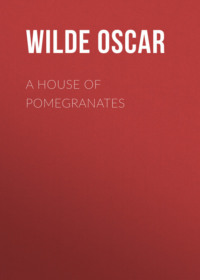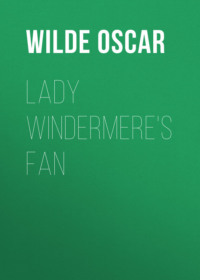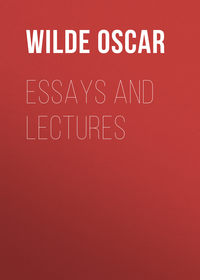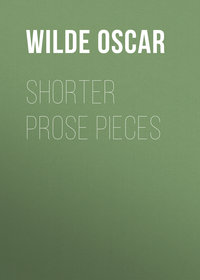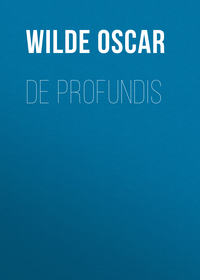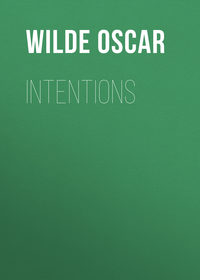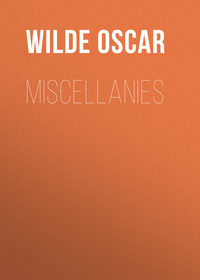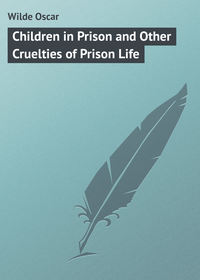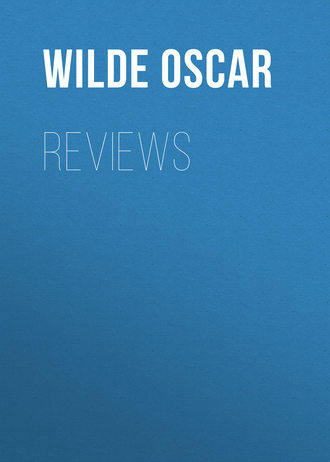 полная версия
полная версияReviews
What wilt thou do? What can the handful still left? —
lines that owe their blank verse character more to the courtesy of the printer than to the genius of the poet, for without rhythm and melody there is no verse at all; and the attempt to fit Greek forms of construction to our English language often gives the work the air of an awkward translation; however, there is a great deal that is pleasing in Helena in Troas and, on the whole, the play was worthy of its pageant and the poem deserved the peplums.
It is much to be regretted that Mr. Godwin’s beautiful theatre cannot be made a permanent institution. Even looked at from the low standpoint of educational value, such a performance as that given last Monday might be of the greatest service to modern culture; and who knows but a series of these productions might civilise South Kensington and give tone to Brompton?
Still it is something to have shown our artists ‘a dream of form in days of thought,’ and to have allowed the Philistines to peer into Paradise. And this is what Mr. Godwin has done.
PLEASING AND PRATTLING
(Pall Mall Gazette, August 4, 1880.)
Sixty years ago, when Sir Walter Scott was inaugurating an era of historical romance, The Wolfe of Badenoch was a very popular book. To us its interest is more archæological than artistic, and its characters seem merely puppets parading in fourteenth-century costume. It is true our grandfathers thought differently. They liked novels in which the heroine exclaims, ‘Peace with thine impudence, sir knave. Dost thou dare to speak thus in presence of the Lady Eleanore de Selby?.. A greybeard’s ire shall never – ,’ while the hero remarks that ‘the welkin reddenes i’ the west.’ In fact, they considered that language like this is exceedingly picturesque and gives the necessary historical perspective. Nowadays, however, few people have the time to read a novel that requires a glossary to explain it, and we fear that without a glossary the general reader will hardly appreciate the value of such expressions as ‘gnoffe,’ ‘bowke,’ ‘herborow,’ ‘papelarde,’ ‘couepe,’ ‘rethes,’ ‘pankers,’ ‘agroted lorrel,’ and ‘horrow tallow-catch,’ all of which occur in the first few pages of The Wolfe of Badenoch. In a novel we want life, not learning; and, unfortunately, Sir Thomas Lauder lays himself open to the criticism Jonson made on Spenser, that ‘in affecting the ancients he writ no language.’ Still, there is a healthy spirit of adventure in the book, and no doubt many people will be interested to see the kind of novel the public liked in 1825.
Keep My Secret, by Miss G. M. Robins, is very different. It is quite modern both in manner and in matter. The heroine, Miss Olga Damien, when she is a little girl tries to murder Mr. Victor Burnside. Mr. Burnside, who is tall, blue-eyed and amber-haired, makes her promise never to mention the subject to any one; this, in fact, is the secret that gives the title to the book. The result is that Miss Damien is blackmailed by a fascinating and unscrupulous uncle and is nearly burnt to death in the secret chamber of an old castle. The novel at the end gets too melodramatic in character and the plot becomes a chaos of incoherent incidents, but the writing is clever and bright. It is just the book, in fact, for a summer holiday, as it is never dull and yet makes no demands at all upon the intellect.
Mrs. Chetwynd gives us a new type of widow. As a rule, in fiction widows are delightful, designing and deceitful; but Mrs. Dorriman is not by any means a Cleopatra in crape. She is a weak, retiring woman, very feeble and very feminine, and with the simplicity that is characteristic of such sweet and shallow natures she allows her brother to defraud her of all her property. The widow is rather a bore and the brother is quite a bear, but Margaret Rivers who, to save her sister from poverty, marries a man she does not love, is a cleverly conceived character, and Lady Lyons is an admirable old dowager. The book can be read without any trouble and was probably written without any trouble also. The style is prattling and pleasing.
The plot of Delamere is not very new. On the death of her husband, Mrs. De Ruthven discovers that the estates belong by right not to her son Raymond but to her niece Fleurette. As she keeps her knowledge to herself, a series of complications follows, but the cousins are ultimately united in marriage and the story ends happily. Mr. Curzon writes in a clever style, and though its construction is rather clumsy the novel is a thoroughly interesting one.
A Daughter of Fife tells us of the love of a young artist for a Scotch fisher-girl. The character sketches are exceptionally good, especially that of David Promoter, a fisherman who leaves his nets to preach the gospel, and the heroine is quite charming till she becomes civilised. The book is a most artistic combination of romantic feeling with realistic form, and it is pleasant to read descriptions of Scotch scenery that do not represent the land of mist and mountain as a sort of chromolithograph from the Brompton Road.
In Mr. Speight’s novel, A Barren Title, we have an impoverished earl who receives an allowance from his relations on condition of his remaining single, being all the time secretly married and the father of a grown-up son. The story is improbable and amusing.
On the whole, there is a great deal to be said for our ordinary English novelists. They have all some story to tell, and most of them tell it in an interesting manner. Where they fail is in concentration of style. Their characters are far too eloquent and talk themselves to tatters. What we want is a little more reality and a little less rhetoric. We are most grateful to them that they have not as yet accepted any frigid formula, nor stereotyped themselves into a school, but we wish that they would talk less and think more. They lead us through a barren desert of verbiage to a mirage that they call life; we wander aimlessly through a very wilderness of words in search of one touch of nature. However, one should not be too severe on English novels: they are the only relaxation of the intellectually unemployed.
(1) The Wolfe of Badenoch: A Historical Romance of the Fourteenth Century. By Sir Thomas Lauder. (Hamilton, Adams and Co.)
(2) Keep My Secret. By G. M. Robins. (Bentley and Son.)
(3) Mrs. Dorriman. By the Hon. Mrs. Henry Chetwynd. (Chapman and Hall.)
(4) Delamere. By G. Curzon. (Sampson Low, Marston and Co.)
(5) A Daughter of Fife. By Amelia Barr. (James Clarke and Co.)
(6) A Barren Title. By T. W. Speight. (Chatto and Windus.)
BALZAC IN ENGLISH
(Pall Mall Gazette, September 13, 1886.)
Many years ago, in a number of All the Year Round, Charles Dickens complained that Balzac was very little read in England, and although since then the public has become more familiar with the great masterpieces of French fiction, still it may be doubted whether the Comédie Humaine is at all appreciated or understood by the general run of novel readers. It is really the greatest monument that literature has produced in our century, and M. Taine hardly exaggerates when he says that, after Shakespeare, Balzac is our most important magazine of documents on human nature. Balzac’s aim, in fact, was to do for humanity what Buffon had done for the animal creation. As the naturalist studied lions and tigers, so the novelist studied men and women. Yet he was no mere reporter. Photography and procès-verbal were not the essentials of his method. Observation gave him the facts of life, but his genius converted facts into truths, and truths into truth. He was, in a word, a marvellous combination of the artistic temperament with the scientific spirit. The latter he bequeathed to his disciples; the former was entirely his own. The distinction between such a book as M. Zola’s L’Assommoir and such a book as Balzac’s Illusions Perdues is the distinction between unimaginative realism and imaginative reality. ‘All Balzac’s characters,’ said Baudelaire, ‘are gifted with the same ardour of life that animated himself. All his fictions are as deeply coloured as dreams. Every mind is a weapon loaded to the muzzle with will. The very scullions have genius.’ He was, of course, accused of being immoral. Few writers who deal directly with life escape that charge. His answer to the accusation was characteristic and conclusive. ‘Whoever contributes his stone to the edifice of ideas,’ he wrote, ‘whoever proclaims an abuse, whoever sets his mark upon an evil to be abolished, always passes for immoral. If you are true in your portraits, if, by dint of daily and nightly toil, you succeed in writing the most difficult language in the world, the word immoral is thrown in your face.’ The morals of the personages of the Comédie Humaine are simply the morals of the world around us. They are part of the artist’s subject-matter; they are not part of his method. If there be any need of censure it is to life, not to literature, that it should be given. Balzac, besides, is essentially universal. He sees life from every point of view. He has no preferences and no prejudices. He does not try to prove anything. He feels that the spectacle of life contains its own secret. ‘II crée un monde et se tait.’
And what a world it is! What a panorama of passions! What a pell-mell of men and women! It was said of Trollope that he increased the number of our acquaintances without adding to our visiting list; but after the Comédie Humaine one begins to believe that the only real people are the people who have never existed. Lucien de Rubempré, le Père Goriot, Ursule Mirouët, Marguerite Claës, the Baron Hulot, Madame Marneffe, le Cousin Pons, De Marsay – all bring with them a kind of contagious illusion of life. They have a fierce vitality about them: their existence is fervent and fiery-coloured; we not merely feel for them but we see them – they dominate our fancy and defy scepticism. A steady course of Balzac reduces our living friends to shadows, and our acquaintances to the shadows of shades. Who would care to go out to an evening party to meet Tomkins, the friend of one’s boyhood, when one can sit at home with Lucien de Rubempré? It is pleasanter to have the entrée to Balzac’s society than to receive cards from all the duchesses in May fair.
In spite of this, there are many people who have declared the Comédie Humaine to be indigestible. Perhaps it is: but then what about truffles? Balzac’s publisher refused to be disturbed by any such criticism as that. ‘Indigestible, is it?’ he exclaimed with what, for a publisher, was rare good sense. ‘Well, I should hope so; who ever thinks of a dinner that isn’t?’ And our English publisher, Mr. Routledge, clearly agrees with M. Poulet-Malassis, as he is occupied in producing a complete translation of the Comédie Humaine. The two volumes that at present lie before us contain César Birotteau, that terrible tragedy of finance, and L’lllustre Gaudissart, the apotheosis of the commercial traveller, the Duchesse de Langeais, most marvellous of modern love stories, Le Chef d’Œuvre Inconnu, from which Mr. Henry James took his Madonna of the Future, and that extraordinary romance Une Passion dans le Désert. The choice of stories is quite excellent, but the translations are very unequal, and some of them are positively bad. L’lllustre Gaudissart, for instance, is full of the most grotesque mistakes, mistakes that would disgrace a schoolboy. ‘Bon conseil vaut un œil dans la main’ is translated ‘Good advice is an egg in the hand’! ‘Écus rebelles’ is rendered ‘rebellious lucre,’ and such common expressions as ‘faire la barbe,’ ‘attendre la vente,’ ‘n’entendre rien,’ pâlir sur une affaire,’ are all mistranslated. ‘Des bois de quoi se faire un cure-dent’ is not ‘a few trees to slice into toothpicks,’ but ‘as much timber as would make a toothpick’; ‘son horloge enfermée dans une grande armoire oblongue’ is not ‘a clock which he kept shut up in a large oblong closet’ but simply a clock in a tall clock-case; ‘journal viager’ is not ‘an annuity,’ ‘garce’ is not the same as ‘farce,’ and ‘dessins des Indes’ are not ‘drawings of the Indies.’ On the whole, nothing can be worse than this translation, and if Mr. Routledge wishes the public to read his version of the Comédie Humaine, he should engage translators who have some slight knowledge of French.
César Birotteau is better, though it is not by any means free from mistakes. ‘To suffer under the Maximum’ is an absurd rendering of ‘subir le maximum’; ‘perse’ is ‘chintz,’ not ‘Persian chintz’; ‘rendre le pain bénit’ is not ‘to take the wafer’; ‘rivière’ is hardly a ‘fillet of diamonds’; and to translate ‘son cœur avait un calus à l’endroit du loyer’ by ‘his heart was a callus in the direction of a lease’ is an insult to two languages. On the whole, the best version is that of the Duchesse de Langeais, though even this leaves much to be desired. Such a sentence as ‘to imitate the rough logician who marched before the Pyrrhonians while denying his own movement’ entirely misses the point of Balzac’s ‘imiter le rude logicien qui marchait devant les pyrrhoniens, qui niaient le mouvement.’
We fear Mr. Routledge’s edition will not do. It is well printed and nicely bound; but his translators do not understand French. It is a great pity, for La Comédie Humaine is one of the masterpieces of the age.
Balzac’s Novels in English. The Duchesse de Langeais and Other Stories; César Birotteau. (Routledge and Sons.)
TWO NEW NOVELS
(Pall Mall Gazette, September 16, 1880.)
Most modern novels are more remarkable for their crime than for their culture, and Mr. G. Manville Fenn’s last venture is no exception to the general rule. The Master of the Ceremonies is turbid, terrifying and thrilling. It contains, besides many ‘moving accidents by flood and field,’ an elopement, an abduction, a bigamous marriage, an attempted assassination, a duel, a suicide, and a murder. The murder, we must acknowledge, is a masterpiece. It would do credit to Gaboriau, and should make Miss Braddon jealous. The Newgate Calendar itself contains nothing more fascinating, and what higher praise than this can be given to a sensational novel? Not that Lady Teigne, the hapless victim, is killed in any very new or subtle manner. She is merely strangled in bed, like Desdemona; but the circumstances of the murder are so peculiar that Claire Denville, in common with the reader, suspects her own father of being guilty, while the father is convinced that the real criminal is his eldest son. Stuart Denville himself, the Master of the Ceremonies, is most powerfully drawn. He is a penniless, padded dandy who, by a careful study of the ‘grand style’ in deportment, has succeeded in making himself the Brummel of the promenade and the autocrat of the Assembly Rooms. A light comedian by profession, he is suddenly compelled to play the principal part in a tragedy. His shallow, trivial nature is forced into the loftiest heroism, the noblest self-sacrifice. He becomes a hero against his will. The butterfly goes to martyrdom, the fop has to become fine. Round this character centres, or rather should centre, the psychological interest of the book, but unfortunately Mr. Fenn has insisted on crowding his story with unnecessary incident. He might have made of his novel ‘A Soul’s Tragedy,’ but he has produced merely a melodrama in three volumes. The Master of the Ceremonies is a melancholy example of the fatal influence of Drury Lane on literature. Still, it should be read, for though Mr. Fenn has offered up his genius as a holocaust to Mr. Harris, he is never dull, and his style is on the whole very good. We wish, however, that he would not try to give articulate form to inarticulate exclamations. Such a passage as this is quite dreadful and fails, besides, in producing the effect it aims at:
‘He – he – he, hi – hi – hi, hec – hec – hec, ha – ha – ha! ho – ho! Bless my – hey – ha! hey – ha! hugh – hugh – hugh! Oh dear me! Oh – why don’t you – heck – heck – heck – heck – heck! shut the – ho – ho – ho – ho – hugh – hugh – window before I – ho – ho – ho – ho!’
This horrible jargon is supposed to convey the impression of a lady coughing. It is, of course, a mere meaningless monstrosity on a par with spelling a sneeze. We hope that Mr. Fenn will not again try these theatrical tricks with language, for he possesses a rare art – the art of telling a story well.
A Statesman’s Love, the author tells us in a rather mystical preface, was written ‘to show that the alchemist-like transfiguration supposed to be wrought in our whole nature by that passion has no existence in fact,’ but it cannot be said to prove this remarkable doctrine.
It is an exaggerated psychological study of a modern woman, a sort of picture by limelight, full of coarse colours and violent contrasts, not by any means devoid of cleverness but essentially false and over-emphasised. The heroine, Helen Rohan by name, tells her own story and, as she takes three volumes to do it in, we weary of the one point of view. Life to be intelligible should be approached from many sides, and valuable though the permanent ego may be in philosophy, the permanent ego in fiction soon becomes a bore. There are, however, some interesting scenes in the novel, and a good portrait of the Young Pretender, for though the heroine is absolutely a creation of the nineteenth century, the background of the story is historical and deals with the Rebellion of ’45. As for the style, it is often original and picturesque; here and there are strong individual touches and brilliant passages; but there is also a good deal of pretence and a good deal of carelessness.
What can be said, for instance, about such expressions as these, taken at random from the second volume, – ‘evanishing,’ ‘solitary loneness,’ ‘in my then mood,’ ‘the bees might advantage by to-day,’ ‘I would not listen reverently as did the other some who went,’ ‘entangling myself in the net of this retiari,’ and why should Bassanio’s beautiful speech in the trial scene be deliberately attributed to Shylock? On the whole, A Statesman’s Love cannot be said to be an artistic success; but still it shows promise and, some day, the author who, to judge by the style, is probably a woman, may do good work. This, however, will require pruning, prudence and patience. We shall see.
(1) The Master of the Ceremonies. By G. Manville Fenn. (Ward and Downey.)
(2) A Statesman’s Love. By Emile Bauche. (Blackwood and Co.)
BEN JONSON
(Pall Mall Gazette, September 20, 1886.)
In selecting Mr. John Addington Symonds to write the life of Ben Jonson for his series of ‘English Worthies,’ Mr. Lang, no doubt, exercised a wise judgment. Mr. Symonds, like the author of Volpone, is a scholar and a man of letters; his book on Shakspeare’s Predecessors showed a marvellous knowledge of the Elizabethan period, and he is a recognised authority on the Italian Renaissance. The last is not the least of his qualifications. Without a full appreciation of the meaning of the Humanistic movement it is impossible to understand the great struggle between the Classical form and the Romantic spirit which is the chief critical characteristic of the golden age of the English drama, an age when Shakespeare found his chief adversary, not among his contemporaries, but in Seneca, and when Jonson armed himself with Aristotle to win the suffrages of a London audience. Mr. Symonds’ book, consequently, will be opened with interest. It does not, of course, contain much that is new about Jonson’s life. But the facts of Jonson’s life are already well known, and in books of this kind what is true is of more importance than what is new, appreciation more valuable than discovery. Scotchmen, however, will, no doubt, be interested to find that Mr. Symonds has succeeded in identifying Jonson’s crest with that of the Johnstones of Annandale, and the story of the way the literary Titan escaped from hanging, by proving that he could read, is graphically told.
On the whole, we have a vivid picture of the man as he lived. Where picturesqueness is required, Mr. Symonds is always good. The usual comparison with Dr. Johnson is, of course, brought out. Few of ‘Rare Ben’s’ biographers spare us that, and the point is possibly a natural one to make. But when Mr. Symonds calls upon us to notice that both men made a journey to Scotland, and that ‘each found in a Scotchman his biographer,’ the parallel loses all value. There is an M in Monmouth and an M in Macedon, and Drummond of Hawthornden and Boswell of Auchinleck were both born the other side of the Tweed; but from such analogies nothing is to be learned. There is no surer way of destroying a similarity than to strain it.
As for Mr. Symonds’ estimate of Jonson’s genius, it is in many points quite excellent. He ranks him with the giants rather than with the gods, with those who compel our admiration by their untiring energy and huge strength of intellectual muscle, not with those ‘who share the divine gifts of creative imagination and inevitable instinct.’ Here he is right. Pelion more than Parnassus was Jonson’s home. His art has too much effort about it, too much definite intention. His style lacks the charm of chance. Mr. Symonds is right also in the stress he lays on the extraordinary combination in Jonson’s work of the most concentrated realism with encyclopædic erudition. In Jonson’s comedies London slang and learned scholarship go hand in hand. Literature was as living a thing to him as life itself. He used his classical lore not merely to give form to his verse, but to give flesh and blood to the persons of his plays. He could build up a breathing creature out of quotations. He made the poets of Greece and Rome terribly modern, and introduced them to the oddest company. His very culture is an element in his coarseness. There are moments when one is tempted to liken him to a beast that has fed off books.
We cannot, however, agree with Mr. Symonds when he says that Jonson ‘rarely touched more than the outside of character,’ that his men and women are ‘the incarnations of abstract properties rather than living human beings,’ that they are in fact mere ‘masqueraders and mechanical puppets.’ Eloquence is a beautiful thing but rhetoric ruins many a critic, and Mr. Symonds is essentially rhetorical. When, for instance, he tells us that ‘Jonson made masks,’ while ‘Dekker and Heywood created souls,’ we feel that he is asking us to accept a crude judgment for the sake of a smart antithesis. It is, of course, true that we do not find in Jonson the same growth of character that we find in Shakespeare, and we may admit that most of the characters in Jonson’s plays are, so to speak, ready-made. But a ready-made character is not necessarily either mechanical or wooden, two epithets Mr. Symonds uses constantly in his criticism.
We cannot tell, and Shakespeare himself does not tell us, why Iago is evil, why Regan and Goneril have hard hearts, or why Sir Andrew Aguecheek is a fool. It is sufficient that they are what they are, and that nature gives warrant for their existence. If a character in a play is lifelike, if we recognise it as true to nature, we have no right to insist on the author explaining its genesis to us. We must accept it as it is: and in the hands of a good dramatist mere presentation can take the place of analysis, and indeed is often a more dramatic method, because a more direct one. And Jonson’s characters are true to nature. They are in no sense abstractions; they are types. Captain Bobadil and Captain Tucca, Sir John Daw and Sir Amorous La Foole, Volpone and Mosca, Subtle and Sir Epicure Mammon, Mrs. Purecraft and the Rabbi Busy are all creatures of flesh and blood, none the less lifelike because they are labelled. In this point Mr. Symonds seems to us unjust towards Jonson.
We think, also, that a special chapter might have been devoted to Jonson as a literary critic. The creative activity of the English Renaissance is so great that its achievements in the sphere of criticism are often overlooked by the student. Then, for the first time, was language treated as an art. The laws of expression and composition were investigated and formularised. The importance of words was recognised. Romanticism, Realism and Classicism fought their first battles. The dramatists are full of literary and art criticisms, and amused the public with slashing articles on one another in the form of plays.


